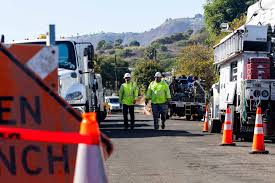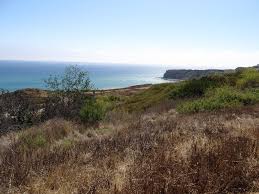
RANCHO PALOS VERDES, Calif. — As the ground keeps shifting beneath homes, streets, and even historic landmarks, the city of Rancho Palos Verdes is weighing a dramatic move: an indefinite ban on all new construction in its most landslide-prone zones.
The Portuguese Bend landslide, dormant for 30,000 years, was reactivated by construction in the 1950s — and it hasn’t stopped since. Today, the creeping disaster is tearing apart roads, splitting houses, and threatening to swallow entire neighborhoods perched on California’s iconic coastal bluffs.

One symbol of this fragile landscape is the beloved Wayfarers Chapel, designed by Lloyd Wright, son of Frank Lloyd Wright, which has already been carefully dismantled and stored to prevent total loss.
Now, city officials say it’s time for extreme measures. At a town hall last week, they unveiled a proposed ordinance that would permanently ban any new builds — no new homes, no additions, no garages — nothing. Homeowners could still repair or rebuild on their original footprint, but any expansion or new projects would be off the table for good.
“In the case of property rights versus public safety, the extreme measures seem like the only way to mitigate further loss,” city officials said at the meeting.
The permanent ban would extend a temporary moratorium enacted in October 2023 after the city declared a local state of emergency. Under state law, that emergency measure will expire in October 2025 if no permanent fix is adopted.
The sweeping proposal isn’t without fierce local opposition. Some residents argue that deciding what risks to take on their own land should be their right. Owners of vacant lots — many uninsured — face huge financial losses if they can’t build at all. Longtime homeowners fear that a permanent ban will crater property values, even in areas that haven’t yet seen major damage or where slide activity has stalled for decades.
The proposed boundaries cover both the Portuguese Bend complex and the nearby Abalone Cove landslide — a zone that began shifting in 1974 but hasn’t moved much recently. Opponents say that lumping all these areas together under one strict rule is unfair and creates stigma for homes that may never actually slip away.

This wouldn’t be the city’s first attempt to limit development. After major slides in 1978, Rancho Palos Verdes imposed interim moratoriums and tight restrictions — but never a blanket, permanent ban.
City officials point to a 2008 lawsuit that forced them to approve new development on 16 lots in an at-risk zone. Five of those new homes are now uninhabitable.
Currently, 40 homes in the area have been officially red-tagged as unsafe to occupy, with another 38 yellow-tagged for severe structural damage. Officials warn the real number could be higher since inspections are voluntary.
The city hopes to secure more help through FEMA’s Hazard Mitigation Grant Program, which offers buyouts to turn unstable neighborhoods into open space. So far, Rancho Palos Verdes has asked FEMA for another $40 million to expand this program — giving homeowners a way out before the ground takes their houses anyway.
The City Council is set to vote on the proposed permanent ban this August. If approved, Rancho Palos Verdes would become one of the only communities in California to permanently halt all new construction to protect people and property from an ancient, unpredictable threat.
Originally reported by July Winters in The Architects Newspaper.